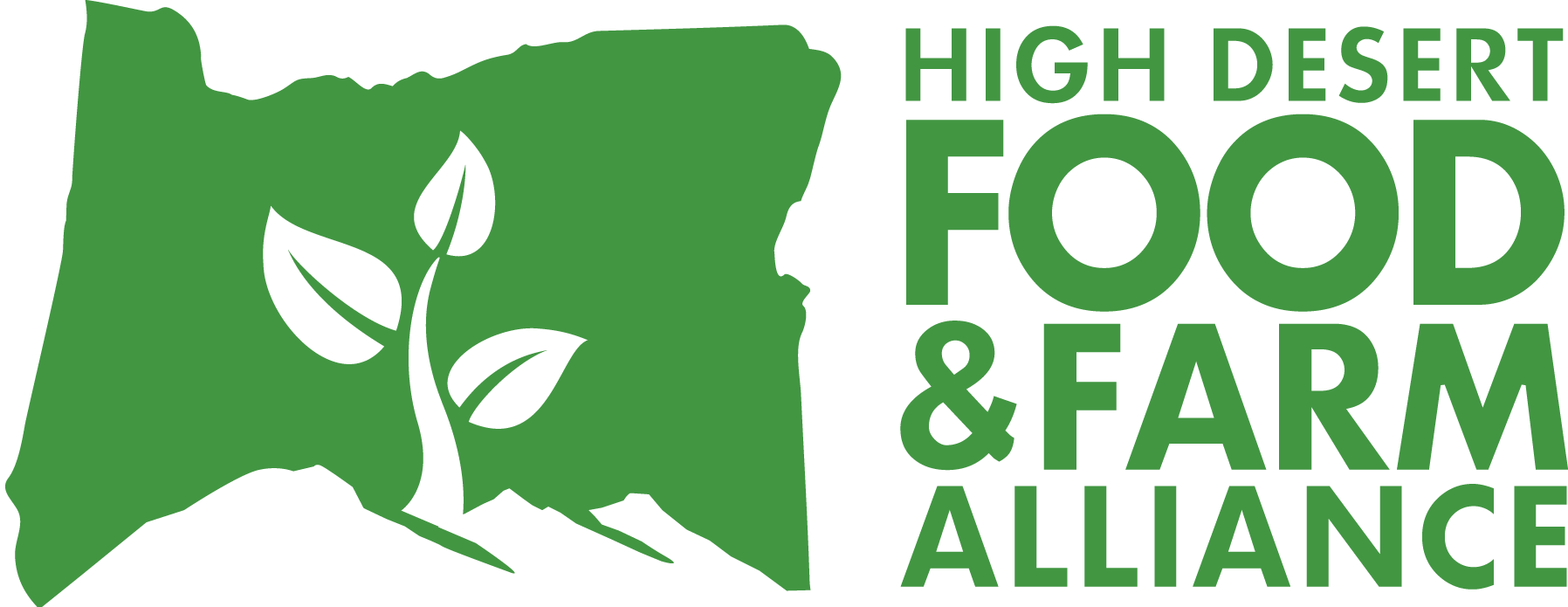Water usage is a big topic here in the West, and Central Oregon is explicitly experiencing a multi-year drought. Here in the tri-county area, most of our farms are supplied water sourced from the Deschutes Basin; the Deschutes River flows north from the Cascade Mountains through Bend, Madras, and into the Columbia River, while the Crooked River flows through Prineville before eventually reaching the Deschutes. This watershed makes our region unique and has a variety of stakeholders that rely on it: recreation, in-stream conservation and habitat protection, agricultural production, and municipal use. During the summer, 86% of the Deschutes River flowing through Bend is diverted for agricultural use; 12% is reserved to stay in-stream; and 2% of the water is provided for municipal use.
The majority of Central Oregon farms receive water through one of the eight Irrigation Districts that manage water and flow in the Deschutes Basin. For these patrons, irrigation season and water delivery typically last from April to October. However, this irrigation season is often subject to changes throughout the summer, based on the irrigation district. For example, on July 5th, the Central Oregon Irrigation District (COID) alerted patrons to a drop to 75–80% of regular delivery, quickly dropping to 60% on July 14th. This means that affected farmers have to adjust their practices in the height of the growing season, with additional curtailments potentially throughout the summer. Despite the wetter spring, we experienced here in Central Oregon, our drought status remains.

Since water is such a complicated topic, we’re going to focus on the variety of resources that exist and share HDFFA’s small role in it. Irrigating farmland may feel far removed from the consumer of the products grown and raised here –– especially when we see such bounty when walking through a farmers market! Numerous local organizations work on water policy, and champion collaborative use and positive action. There are many resources related to this work and navigating drought-like conditions. We can all learn from these, and play our part in responsible water use to help restore streamflow.
The Deschutes River Conservancy (DRC) puts on a series called Raise the Deschutes. These monthly seminars (currently on hiatus for the summer) are free to the public and offer a dive deep into specific topics. The DRC also hosts other incredible resources, like maps, data, and suggestions for the future. They have historically worked with Tribal entities, irrigation districts, and farmers to reach collaborative, actionable solutions – such as in-stream leasing and the water trade program. You can watch recordings of previous seminars here and find additional resources here.


The public is welcome to attend Irrigation District Board meetings to learn about flow rates, board decisions, and more; if you are an irrigator, you can ensure you receive flow updates through your respective district. For example, you can find information about future COID board meetings here. If you are a landowner, you may also find navigating the Deschutes Soil and Water Conservation District (DSWCD) website helpful to find funding opportunities, classes, and more. HDFFA is supporting a workshop put on by DSWCD with Thompson Pump and School of Ranch this month for irrigators to learn about maintenance for pivot systems specifically.
In 2022, to help ensure that small commercial farms’ voices are heard, HDFFA petitioned to be a voting member in the Deschutes Basin Water Collaborative (DBCW). Central Oregon Intergovernmental Council facilitates this group to bring together stakeholders involved in water usage. The DBWC is currently developing the Deschutes Basin Water Plan to use as a guiding document for all members. We are excited by the collaboration seen between the organizations and individuals represented in the group. The public is invited to join as non-voting members; for more information and to watch previous recordings, head to the DBWC website.
Many farmers in our region are compelled to invest in efficiency upgrades due to the ongoing drought and unreliability of water delivery in order to stay viable as businesses. The kinds of upgrades depend on the farm’s size and the crop they grow. However, it can often be difficult for farmers to put an upfront investment into equipment and upgrades, even when there is a guaranteed payoff.
HDFFA administers the On-Farm Efficiency Grant (OFEG) to promote the investment of infrastructure, equipment, or professional services that will lead to more efficient farming practices, such as the purchase of irrigation equipment. For example, this year, HDFFA awarded $3,000 to DD Ranch to supplement a grant through the NRCS (National Resource Conservation Service) for a pivot that will reduce water by up to 70% while also increasing yield. Wild Grown Farm also applied $2,991 in OFEG funds towards a more efficient watering system in their greenhouse through the use of capillary mats. If you would like to learn more about last year’s awardees, head to hdffa.org/on-farm-efficiency-grant-2022; we will be announcing more information about the 2023 awardees’ final projects soon.
As you float the river or explore the local food options available in Central Oregon, remember that the meat and produce grown and raised here depends on the water the farms and ranches receive. We encourage you to continue to learn about this complicated topic, attend local and state hearings on water usage, participate in events like the Raise the Deschutes series, and talk to our local producers.






